Shiva
Jump to navigation
Jump to search
Shiva (/ˈʃiːvə/; Sanskrit: शिव, Śiva, lit. the auspicious one) also known as Mahadeva ( lit. the great god)[8][9][10] is one of the principal deities of Hinduism. He is one of the supreme beings within Shaivism, one of the major traditions within contemporary Hinduism.[11][12]
Shiva is known as "The Destroyer" within the Trimurti, the Hindu trinity that includes Brahma and Vishnu.[1][13] In Shaivism tradition, Shiva is one of the supreme beings who creates, protects and transforms the universe.[8][9][10] In the tradition of Hinduism called Shaktism, the Goddess, or Devi, is described as one of the supreme, yet Shiva is revered along with Vishnu and Brahma. A goddess is stated to be the energy and creative power (Shakti) of each, with Parvati (Sati) the equal complementary partner of Shiva.[14][15] He is one of the five equivalent deities in Panchayatana puja of the Smarta tradition of Hinduism.[11]
According to the Shaivism sect, the highest form of Ishvar is formless, limitless, transcendent and unchanging absolute Brahman,[16] and the primal Atman (soul, self) of the universe.[17][18][8] There are many both benevolent and fearsome depictions of Shiva. In benevolent aspects, he is depicted as an omniscient Yogi who lives an ascetic life on Mount Kailash[1] as well as a householder with wife Parvati and his two children, Ganesha and Kartikeya. In his fierce aspects, he is often depicted slaying demons. Shiva is also known as Adiyogi Shiva, regarded as the patron god of yoga, meditation and arts.[19][20][21]
The iconographical attributes of Shiva are the serpent around his neck, the adorning crescent moon, the holy river Ganga flowing from his matted hair, the third eye on his forehead, the trishula or trident, as his weapon, and the damaru drum. He is usually worshipped in the aniconic form of Lingam.[2] Shiva is a pan-Hindu deity, revered widely by Hindus, in India, Nepal and Sri Lanka.[22][23]
| Shiva | |
|---|---|
| Member of Trimurti | |

Statue of Shiva in the lotus position at Murudeshwar
| |
| Other names | Mahesha, Shankara, Bholenath, Neelkanth, Mahdev |
| Affiliation | Parabrahman (Shaivism), Trimurti, Paramatman, Ishvara, Deva |
| Abode | Mount Kailash[1] |
| Mantra | Om Namah Shivaya |
| Weapon | Pashupatastra, Trident, Parashu-Axe, Pinaka bow[2] |
| Symbols | Lingam,[2] Trident, Crescent Moon, Damaru Drum |
| Mount | Nandi (bull)[3] |
| Festivals | Shraavana, Maha Shivaratri, Ekadashi, Kartik Purnima, Bhairava Ashtami[4] |
| Personal information | |
| Consort | Sati, Parvati, Kali, Adi Parashakti |
| Children | Ganesha, Kartikeya, Ashokasundari Regional: Ayyappan,[5][6] Ashok Sundari[7] |
Shiva is known as "The Destroyer" within the Trimurti, the Hindu trinity that includes Brahma and Vishnu.[1][13] In Shaivism tradition, Shiva is one of the supreme beings who creates, protects and transforms the universe.[8][9][10] In the tradition of Hinduism called Shaktism, the Goddess, or Devi, is described as one of the supreme, yet Shiva is revered along with Vishnu and Brahma. A goddess is stated to be the energy and creative power (Shakti) of each, with Parvati (Sati) the equal complementary partner of Shiva.[14][15] He is one of the five equivalent deities in Panchayatana puja of the Smarta tradition of Hinduism.[11]
According to the Shaivism sect, the highest form of Ishvar is formless, limitless, transcendent and unchanging absolute Brahman,[16] and the primal Atman (soul, self) of the universe.[17][18][8] There are many both benevolent and fearsome depictions of Shiva. In benevolent aspects, he is depicted as an omniscient Yogi who lives an ascetic life on Mount Kailash[1] as well as a householder with wife Parvati and his two children, Ganesha and Kartikeya. In his fierce aspects, he is often depicted slaying demons. Shiva is also known as Adiyogi Shiva, regarded as the patron god of yoga, meditation and arts.[19][20][21]
The iconographical attributes of Shiva are the serpent around his neck, the adorning crescent moon, the holy river Ganga flowing from his matted hair, the third eye on his forehead, the trishula or trident, as his weapon, and the damaru drum. He is usually worshipped in the aniconic form of Lingam.[2] Shiva is a pan-Hindu deity, revered widely by Hindus, in India, Nepal and Sri Lanka.[22][23]
Contents
Etymology and other names
A sculpture of Shiva at the Elephanta Caves
A sculpture of siva with Moustache at Archaeological Museum GOA
The word Shiva is used as an adjective in the Rig Veda (approximately 1700–1100 BC), as an epithet for several Rigvedic deities, including Rudra.[26] The term Shiva also connotes "liberation, final emancipation" and "the auspicious one", this adjective sense of usage is addressed to many deities in Vedic layers of literature.[24][27] The term evolved from the Vedic Rudra-Shiva to the noun Shiva in the Epics and the Puranas, as an auspicious deity who is the "creator, reproducer and dissolver".[24][28]
Sharva, sharabha presents another etymology with the Sanskrit root śarv-, which means "to injure" or "to kill",[29] interprets the name to connote "one who can kill the forces of darkness".[30]
The Sanskrit word śaiva means "relating to the god Shiva", and this term is the Sanskrit name both for one of the principal sects of Hinduism and for a member of that sect.[31] It is used as an adjective to characterize certain beliefs and practices, such as Shaivism.[32]
Some authors associate the name with the Tamil word śivappu meaning "red", noting that Shiva is linked to the Sun (śivan, "the Red one", in Tamil) and that Rudra is also called Babhru (brown, or red) in the Rigveda.[33][34] The Vishnu sahasranama interprets Shiva to have multiple meanings: "The Pure One", and "the One who is not affected by three Guṇas of Prakṛti (Sattva, Rajas, and Tamas)".[35][36]
Shiva is known by many names such as Viswanatha (lord of the universe), Mahadeva, Mahandeo,[37] Mahasu,[38] Mahesha, Maheshvara, Shankara, Shambhu, Rudra, Hara, Trilochana, Devendra (chief of the gods), Neelakanta, Subhankara, Trilokinatha (lord of the three realms),[39][40][41] and Ghrneshwar (lord of compassion).[42] The highest reverence for Shiva in Shaivism is reflected in his epithets Mahādeva ("Great god"; mahā "Great" and deva "god"),[43][44] Maheśvara ("Great Lord"; mahā "great" and īśvara "lord"),[45][46] and Parameśvara ("Supreme Lord").[47]
Sahasranama are medieval Indian texts that list a thousand names derived from aspects and epithets of a deity.[48] There are at least eight different versions of the Shiva Sahasranama, devotional hymns (stotras) listing many names of Shiva.[49] The version appearing in Book 13 (Anuśāsanaparvan) of the Mahabharata provides one such list.[50] Shiva also has Dasha-Sahasranamas (10,000 names) that are found in the Mahanyasa. The Shri Rudram Chamakam, also known as the Śatarudriya, is a devotional hymn to Shiva hailing him by many names.[51][52]
Historical development and literature
The Shiva-related tradition is a major part of Hinduism, found all over India, Nepal, Sri Lanka,[22][23] and Bali (Indonesia).[53] Scholars have interpreted early prehistoric paintings at the Bhimbetka rock shelters, carbon dated to be from pre-10,000 BCE period,[54] as Shiva dancing, Shiva's trident, and his mount Nandi.[3][55][56] Rock paintings from Bhimbetka, depicting a figure with a trishul, have been described as Nataraja by Erwin Neumayer, who dates them to the mesolithic.[57]Indus Valley origins
Seal discovered during excavation of the Indus Valley archaeological site in the Indus Valley has drawn attention as a possible representation of a "yogi" or "proto-Shiva" figure.
Sir John Marshall and others suggested that this figure is a prototype of Shiva, with three faces, seated in a "yoga posture" with the knees out and feet joined.[65] Semi-circular shapes on the head were interpreted as two horns. Scholars such as Gavin Flood, John Keay and Doris Meth Srinivasan have expressed doubts about this suggestion.[66][67][68]
Gavin Flood states that it is not clear from the seal that the figure has three faces, is seated in a yoga posture, or even that the shape is intended to represent a human figure. He characterizes these views as "speculative", but adds that it is nevertheless possible that there are echoes of Shaiva iconographic themes, such as half-moon shapes resembling the horns of a bull.[65][69] John Keay writes that "he may indeed be an early manifestation of Lord Shiva as Pashu-pati", but a couple of his specialties of this figure does not match with Rudra.[70] Writing in 1997, Srinivasan interprets what John Marshall interpreted as facial as not human but more bovine, possibly a divine buffalo-man.[68]
The interpretation of the seal continues to be disputed. McEvilley, for example, states that it is not possible to "account for this posture outside the yogic account".[71] Asko Parpola states that other archaeological finds such as the early Elamite seals dated to 3000-2750 BCE show similar figures and these have been interpreted as "seated bull" and not a yogi, and the bovine interpretation is likely more accurate.[72] Gregory L. Possehl in 2002, associated it with the water buffalo, and concluded that while it would be appropriate to recognize the figure as a deity, and its posture as one of ritual discipline, regarding it as a proto-Shiva would "go too far".[73]
Vedic origins
The Vedic literature refers to a minor atmospheric deity, with fearsome powers called Rudra. The Rigveda, for example, has 3 out of 1,028 hymns dedicated to Rudra, and he finds occasional mention in other hymns of the same text.[74] The term Shiva also appears in the Rigveda, but simply as an epithet that means "kind, auspicious", one of the adjectives used to describe many different Vedic deities. While fierce ruthless natural phenomenon and storm-related Rudra is feared in the hymns of the Rigveda, the beneficial rains he brings are welcomed as Shiva aspect of him.[75] This healing, nurturing, life-enabling aspect emerges in the Vedas as Rudra-Shiva, and in post-Vedic literature ultimately as Shiva who combines the destructive and constructive powers, the terrific and the pacific, as the ultimate recycler and rejuvenator of all existence.[76]The similarities between the iconography and theologies of Shiva with Greek and European deities have led to proposals for an Indo-European link for Shiva,[77][78] or lateral exchanges with ancient central Asian cultures.[79][80] His contrasting aspects such as being terrifying or blissful depending on the situation, are similar to those of the Greek god Dionysus,[81] as are their iconic associations with bull, snakes, anger, bravery, dancing and carefree life.[82][83] The ancient Greek texts of the time of Alexander the Great call Shiva as "Indian Dionysus", or alternatively call Dionysus as "god of the Orient".[82] Similarly, the use of phallic symbol as an icon for Shiva is also found for Irish, Nordic, Greek (Dionysus[84]) and Roman deities, as was the idea of this aniconic column linking heaven and earth among early Indo-Aryans, states Roger Woodward.[77] Others contest such proposals, and suggest Shiva to have emerged from indigenous pre-Aryan tribal origins.[85]
Rudra
Three-headed Shiva, Gandhara, 2nd century AD
The oldest surviving text of Hinduism is the Rig Veda, which is dated to between 1700 and 1100 BC based on linguistic and philological evidence.[88] A god named Rudra is mentioned in the Rig Veda. The name Rudra is still used as a name for Shiva. In RV 2.33, he is described as the "Father of the Rudras", a group of storm gods.[89]
The hymn 10.92 of the Rigveda states that deity Rudra has two natures, one wild and cruel (rudra), another that is kind and tranquil (shiva).[90] The Vedic texts do not mention bull or any animal as the transport vehicle (vahana) of Rudra or other deities. However, post-Vedic texts such as the Mahabharata and the Puranas state the Nandi bull, the Indian zebu, in particular, as the vehicle of Rudra and of Shiva, thereby unmistakably linking them as same.[91]
Agni
Rudra and Agni have a close relationship.[92][93] The identification between Agni and Rudra in the Vedic literature was an important factor in the process of Rudra's gradual development into the later character as Rudra-Shiva.[94] The identification of Agni with Rudra is explicitly noted in the Nirukta, an important early text on etymology, which says, "Agni is also called Rudra."[95] The interconnections between the two deities are complex, and according to Stella Kramrisch:The fire myth of Rudra-Śiva plays on the whole gamut of fire, valuing all its potentialities and phases, from conflagration to illumination.[96]In the Śatarudrīya, some epithets of Rudra, such as Sasipañjara ("Of golden red hue as of flame") and Tivaṣīmati ("Flaming bright"), suggest a fusing of the two deities.[97] Agni is said to be a bull,[98] and Lord Shiva possesses a bull as his vehicle, Nandi. The horns of Agni, who is sometimes characterized as a bull, are mentioned.[99][100] In medieval sculpture, both Agni and the form of Shiva known as Bhairava have flaming hair as a special feature.[101]
Indra
Vima Kadphises with ithyphallic Shiva.
Coin of the Kushan Empire (1st-century BCE to 2nd-century CE). The right image has been interpreted as Shiva with trident and bull.[102]
The Vedic beliefs and practices of the pre-classical era were closely related to the hypothesised Proto-Indo-European religion,[111] and the pre-Islamic Indo-Iranian religion.[112] The earliest iconic artworks of Shiva may be from Gandhara and northwest parts of ancient India. There is some uncertainty as the artwork that has survived is damaged and they show some overlap with meditative Buddha-related artwork, but the presence of Shiva's trident and phallic symbolism in this art suggests it was likely Shiva.[113] Numismatics research suggests that numerous coins of the ancient Kushan Empire that have survived, were images of a god who is probably Shiva.[114] The Shiva in Kushan coins is referred to as Oesho of unclear etymology and origins, but the simultaneous presence of Indra and Shiva in the Kushan era artwork suggest that they were revered deities by the start of the Kushan Empire.[115][116]
The texts and artwork of Jainism show Indra as a dancer, although not identical but generally resembling the dancing Shiva artwork found in Hinduism, particularly in their respective mudras.[117] For example, in the Jain caves at Ellora, extensive carvings show dancing Indra next to the images of Tirthankaras in a manner similar to Shiva Nataraja. The similarities in the dance iconography suggests that there may be a link between ancient Indra and Shiva.[116][117]
Later literature
Rudra's evolution from a minor Vedic deity to a supreme being is first evidenced in the Shvetashvatara Upanishad (400–200 BC), according to Gavin Flood.[67][118] Prior to it, the Upanishadic literature is monistic, and the Shvetashvatara text presents the earliest seeds of theistic devotion to Rudra-Shiva.[67] Here Rudra-Shiva is identified as the creator of the cosmos and liberator of souls from the birth-rebirth cycle. The period of 200 BC to 100 AD also marks the beginning of the Shaiva tradition focused on the worship of Shiva as evidenced in other literature of this period.[67] Shaiva devotees and ascetics are mentioned in Patanjali's Mahābhāṣya (2nd-century BC) and in the Mahabharata.[119] Other scholars such as Robert Hume and Doris Srinivasan state that the Shvetashvatara Upanishad presents pluralism, pantheism, or henotheism, rather than being a text just on Shiva theism.[120][121][122]
Self-realization and Shaiva Upanishads
—Kaivalya Upanishad 10 [123][124]
He who sees himself in all beings,
And all beings in him,
attains the highest Brahman,
not by any other means.
And all beings in him,
attains the highest Brahman,
not by any other means.
A few texts such as Atharvashiras Upanishad mention Rudra, and assert all gods are Rudra, everyone and everything is Rudra, and Rudra is the principle found in all things, their highest goal, the innermost essence of all reality that is visible or invisible.[126] The Kaivalya Upanishad similarly, states Paul Deussen – a German Indologist and professor of Philosophy, describes the self-realized man as who "feels himself only as the one divine essence that lives in all", who feels identity of his and everyone's consciousness with Shiva (highest Atman), who has found this highest Atman within, in the depths of his heart.[123][128]
The Shaiva Puranas, particularly the Shiva Purana and the Linga Purana, present the various aspects of Shiva, mythologies, cosmology and pilgrimage (Tirtha) associated with him.[129][130] The Shiva-related Tantra literature, composed between the 8th and 11th centuries, are regarded in devotional dualistic Shaivism as Sruti. Dualistic Shaiva Agamas which consider soul within each living being and Shiva as two separate realities (dualism, dvaita), are the foundational texts for Shaiva Siddhanta.[131] Other Shaiva Agamas teach that these are one reality (monism, advaita), and that Shiva is the soul, the perfection and truth within each living being.[132][133] In Shiva related sub-traditions, there are ten dualistic Agama texts, eighteen qualified monism-cum-dualism Agama texts and sixty four monism Agama texts.[134][135][136]
Shiva-related literature developed extensively across India in the 1st millennium CE and through the 13th century, particularly in Kashmir and Tamil Shaiva traditions.[136] The monist Shiva literature posit absolute oneness, that is Shiva is within every man and woman, Shiva is within every living being, Shiva is present everywhere in the world including all non-living being, and there is no spiritual difference between life, matter, man and Shiva.[137] The various dualistic and monist Shiva-related ideas were welcomed in medieval southeast Asia, inspiring numerous Shiva-related temples, artwork and texts in Indonesia, Myanmar, Cambodia, Laos, Vietnam, Thailand and Malaysia, with syncretic integration of local pre-existing theologies.[131][138][139]
Assimilation of traditions
The figure of Shiva as we know him today may be an amalgamation of various older deities into a single figure.[23][140] How the persona of Shiva converged as a composite deity is not understood, a challenge to trace and has attracted much speculation.[141] According to Vijay Nath, for example:Vishnu and Siva [...] began to absorb countless local cults and deities within their folds. The latter were either taken to represent the multiple facets of the same god or else were supposed to denote different forms and appellations by which the god came to be known and worshipped. [...] Siva became identified with countless local cults by the sheer suffixing of Isa or Isvara to the name of the local deity, e.g., Bhutesvara, Hatakesvara, Chandesvara."[142]An example of assimilation took place in Maharashtra, where a regional deity named Khandoba is a patron deity of farming and herding castes.[143] The foremost center of worship of Khandoba in Maharashtra is in Jejuri.[144] Khandoba has been assimilated as a form of Shiva himself,[145] in which case he is worshipped in the form of a lingam.[143][146] Khandoba's varied associations also include an identification with Surya[143] and Karttikeya.[147]
Position within Hinduism
Lingodbhava is a Shaiva sectarian icon where Shiva is depicted rising from the Lingam
(an infinite fiery pillar) that narrates how Shiva is the foremost of
the Trimurti; Brahma and Vishnu are depicted bowing to Lingodbhava Shiva
in the centre. This also portrays that lord Shiva is not only worshiped
by the whole universe but also by lord Vishnu and lord Bhramha and all
other gods.
Shaivism
| Part of a series on |
| Shaivism |
|---|
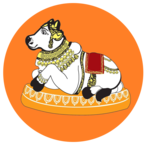 |
The Shaivism theology is broadly grouped into two: the popular theology influenced by Shiva-Rudra in the Vedas, Epics and the Puranas; and the esoteric theology influenced by the Shiva and Shakti-related Tantra texts.[148] The Vedic-Brahmanic Shiva theology includes both monist (advaita) and devotional traditions (dvaita) such as Tamil Shaiva Siddhanta and Lingayatism with temples featuring items such as linga, Shiva-Parvati iconography, bull Nandi within the premises, relief artwork showing mythologies and aspects of Shiva.[149][150]
The Tantric Shiva tradition ignored the mythologies and Puranas related to Shiva, and depending on the sub-school developed a spectrum of practices. For example, historical records suggest the tantric Kapalikas (literally, the "skull-men") co-existed with and shared many Vajrayana Buddhist rituals, engaged in esoteric practices that revered Shiva and Shakti wearing skulls, begged with empty skulls, used meat, alcohol and sexuality as a part of ritual.[151] In contrast, the esoteric tradition within Kashmir Shaivism has featured the Krama and Trika sub-traditions.[152] The Krama sub-tradition focussed on esoteric rituals around Shiva-Kali pair.[153] The Trika sub-tradition developed a theology of triads involving Shiva, combined it with an ascetic lifestyle focusing on personal Shiva in the pursuit of monistic self liberation.[154][152][155]
The Vaishnava (Vishnu-oriented) literature acknowledges and discusses Shiva. Like Shaiva literature that presents Shiva as supreme, the Vaishnava literature presents Vishnu as supreme. However, both traditions are pluralistic and revere both Shiva and Vishnu (along with Devi), their texts do not show exclusivism, and Vaishnava texts such as the Bhagavata Purana while praising Krishna as the Ultimate Reality, also present Shiva and Shakti as a personalized form and equivalent to the same Ultimate Reality.[156][157][158] The texts of Shaivism tradition similarly praise Vishnu. The Skanda Purana, for example, states:
Vishnu is nobody but Shiva, and he who is called Shiva is but identical with Vishnu.Mythologies of both traditions include legends about who is superior, about Shiva paying homage to Vishnu, and Vishnu paying homage to Shiva. However, in texts and artwork of either tradition, the mutual salutes are symbolism for complementarity.[160] The Mahabharata declares the unchanging Ultimate Reality (Brahman) to be identical to Shiva and to Vishnu,[161] that Vishnu is the highest manifestation of Shiva, and Shiva is the highest manifestation of Vishnu.[162]
— Skanda Purana, 1.8.20–21[159]
Shaktism
The goddess-oriented Shakti tradition of Hinduism is based on the premise that the Supreme Principle and the Ultimate Reality called Brahman is female (Devi),[164][165][166] but it treats the male as her equal and complementary partner.[14][15] This partner is Shiva.[167][168]The earliest evidence of the tradition of reverence for the feminine with Rudra-Shiva context, is found in the Hindu scripture Rigveda, in a hymn called the Devi Sukta:[169][170]
The Devi Upanishad in its explanation of the theology of Shaktism, mentions and praises Shiva such as in its verse 19.[172][173] Shiva, along with Vishnu, is a revered god in the Devi Mahatmya, a text of Shaktism considered by the tradition to be as important as the Bhagavad Gita.[174][175] The Ardhanarisvara concept co-mingles god Shiva and goddess Shakti by presenting an icon that is half man and half woman, a representation and theme of union found in many Hindu texts and temples.[176][177]I am the Queen, the gatherer-up of treasures, most thoughtful, first of those who merit worship.
Thus gods have established me in many places with many homes to enter and abide in.
Through me alone all eat the food that feeds them, – each man who sees, breathes, hears the word outspoken.
They know it not, yet I reside in the essence of the Universe. Hear, one and all, the truth as I declare it.
I, verily, myself announce and utter the word that gods and men alike shall welcome.
I make the man I love exceeding mighty, make him nourished, a sage, and one who knows Brahman.
I bend the bow for Rudra [Shiva], that his arrow may strike, and slay the hater of devotion.
I rouse and order battle for the people, I created Earth and Heaven and reside as their Inner Controller.
(...)
Smarta Tradition
Oleograph by Raja Ravi Varma
depicting a Shiva-centric Panchayatana. A bearded Shiva sits in the
centre with his wife Parvati and their infant son Ganesha; surrounded by
(clockwise from left upper corner) Ganesha, Devi, Vishnu and Surya.
Shiva's mount is the bull Nandi below Shiva.
Philosophically, the Smarta tradition emphasizes that all idols (murti) are icons to help focus on and visualize aspects of Brahman, rather than distinct beings. The ultimate goal in this practice is to transition past the use of icons, recognize the Absolute symbolized by the icons,[181] on the path to realizing the nondual identity of one's Atman (soul, self) and the Brahman.[182] Popularized by Adi Shankara, many Panchayatana mandalas and temples have been uncovered that are from the Gupta Empire period, and one Panchayatana set from the village of Nand (about 24 kilometers from Ajmer) has been dated to belong to the Kushan Empire era (pre-300 CE).[183] The Kushan period set includes Shiva, Vishnu, Surya, Brahma and one deity whose identity is unclear.[183]
Yoga
Shiva is considered the Great Yogi who is totally absorbed in himself – the transcendental reality. He is the Lord of Yogis, and the teacher of Yoga to sages.[184] As Shiva Dakshinamurthi, states Stella Kramrisch, he is the supreme guru who "teaches in silence the oneness of one's innermost self (atman) with the ultimate reality (brahman)."[185]The theory and practice of Yoga, in different styles, has been a part of all major traditions of Hinduism, and Shiva has been the patron or spokesperson in numerous Hindu Yoga texts.[186][187] These contain the philosophy and techniques for Yoga. These ideas are estimated to be from or after the late centuries of the 1st millennium CE, and have survived as Yoga texts such as the Isvara Gita (literally, "Shiva's song"), which Andrew Nicholson – a professor of Hinduism and Indian Intellectual History – states have had "a profound and lasting influence on the development of Hinduism".[188]
Other famed Shiva-related texts influenced Hatha Yoga, integrated monistic (Advaita Vedanta) ideas with Yoga philosophy and inspired the theoretical development of Indian classical dance. These include the Shiva Sutras, the Shiva Samhita, and those by the scholars of Kashmir Shaivism such as the 10th-century scholar Abhinavagupta.[186][187][189] Abhinavagupta writes in his notes on the relevance of ideas related to Shiva and Yoga, by stating that "people, occupied as they are with their own affairs, normally do nothing for others", and Shiva and Yoga spirituality helps one look beyond, understand interconnectedness, and thus benefit both the individual and the world towards a more blissful state of existence.[190]
Trimurti
The Trimurti is a concept in Hinduism in which the cosmic functions of creation, maintenance, and destruction are personified by the forms of Brahma the creator, Vishnu the maintainer or preserver and Shiva the destroyer or transformer.[191][192] These three deities have been called "the Hindu triad"[193] or the "Great Trinity".[194] However, the ancient and medieval texts of Hinduism feature many triads of gods and goddesses, some of which do not include Shiva.[195]Attributes
Shiva with Parvati. Shiva is depicted three-eyed, the Ganges
flowing through his matted hair, wearing ornaments of serpents and a
skull garland, covered in ashes, and seated on a tiger skin
A seated Shiva holds an axe and deer in his hands.
- Third eye: Shiva is often depicted with a third eye, with which he burned Desire (Kāma) to ashes,[196] called "Tryambakam" (Sanskrit: त्र्यम्बकम् ), which occurs in many scriptural sources.[197] In classical Sanskrit, the word ambaka denotes "an eye", and in the Mahabharata, Shiva is depicted as three-eyed, so this name is sometimes translated as "having three eyes".[198] However, in Vedic Sanskrit, the word ambā or ambikā means "mother", and this early meaning of the word is the basis for the translation "three mothers".[199][200] These three mother-goddesses who are collectively called the Ambikās.[201] Other related translations have been based on the idea that the name actually refers to the oblations given to Rudra, which according to some traditions were shared with the goddess Ambikā.[202]
- Crescent moon: Shiva bears on his head the crescent moon.[203] The epithet Candraśekhara (Sanskrit: चन्द्रशेखर "Having the moon as his crest" – candra = "moon"; śekhara = "crest, crown")[204][205][206] refers to this feature. The placement of the moon on his head as a standard iconographic feature dates to the period when Rudra rose to prominence and became the major deity Rudra-Shiva.[207] The origin of this linkage may be due to the identification of the moon with Soma, and there is a hymn in the Rig Veda where Soma and Rudra are jointly implored, and in later literature, Soma and Rudra came to be identified with one another, as were Soma and the moon.[208]
- Ashes: Shiva iconography shows his body covered with ashes (bhasma, vibhuti).[209][210] The ashes represent a reminder that all of material existence is impermanent, comes to an end becoming ash, and the pursuit of eternal soul and spiritual liberation is important.[211][212]
- Matted hair: Shiva's distinctive hair style is noted in the epithets Jaṭin, "the one with matted hair",[213] and Kapardin, "endowed with matted hair"[214] or "wearing his hair wound in a braid in a shell-like (kaparda) fashion".[215] A kaparda is a cowrie shell, or a braid of hair in the form of a shell, or, more generally, hair that is shaggy or curly.[216]
- Blue throat: The epithet Nīlakaṇtha (Sanskrit नीलकण्ठ; nīla = "blue", kaṇtha = "throat").[217][218] Since Shiva drank the Halahala poison churned up from the Samudra Manthan to eliminate its destructive capacity. Shocked by his act, Parvati squeezed his neck and stopped it in his neck to prevent it from spreading all over the universe, supposed to be in Shiva's stomach. However the poison was so potent that it changed the color of his neck to blue.[219][220]
- Meditating yogi: his iconography often shows him in a Yoga pose, meditating, sometimes on a symbolic Himalayan Mount Kailasha as the Lord of Yoga.[209]
- Sacred Ganga: The epithet Gangadhara, "Bearer of the river Ganga" (Ganges). The Ganga flows from the matted hair of Shiva.[221][222] The Gaṅgā (Ganga), one of the major rivers of the country, is said to have made her abode in Shiva's hair.[223]
- Tiger skin: Shiva is often shown seated upon a tiger skin.[209]
- Serpents: Shiva is often shown garlanded with a snake.[224]
- Trident: Shiva typically carries a trident called Trishula.[209] The trident is a weapon or a symbol in different Hindu texts.[225] As a symbol, the Trishul represents Shiva's three aspects of "creator, preserver and destroyer",[226] or alternatively it represents the equilibrium of three Gunas of "sattva, rajas and tamas".[227]
- Drum: A small drum shaped like an hourglass is known as a damaru.[228][229] This is one of the attributes of Shiva in his famous dancing representation[230] known as Nataraja. A specific hand gesture (mudra) called ḍamaru-hasta (Sanskrit for "ḍamaru-hand") is used to hold the drum.[231] This drum is particularly used as an emblem by members of the Kāpālika sect.[232]
- Axe (Parashu) and Deer are held in Shiva's hands in Odisha & south Indian icons.[233]
- Rosary beads: he is garlanded with or carries a string of rosary beads in his right hand, typically made of Rudraksha.[209] This symbolises grace, mendicant life and meditation.[234][235]
- Nandī: Nandī, also known as "Nandin", is the name of the bull that serves as Shiva's mount (Sanskrit: vāhana).[236][237] Shiva's association with cattle is reflected in his name Paśupati, or Pashupati (Sanskrit: पशुपति), translated by Sharma as "lord of cattle"[238] and by Kramrisch as "lord of animals", who notes that it is particularly used as an epithet of Rudra.[239]
- Mount Kailāsa: Mount Kailash in the Himalayas is his traditional abode.[209][240] In Hindu mythology, Mount Kailāsa is conceived as resembling a Linga, representing the center of the universe.[241]
- Gaṇa: The Gaṇas are attendants of Shiva and live in Kailash. They are often referred to as the bhutaganas, or ghostly hosts, on account of their nature. Generally benign, except when their lord is transgressed against, they are often invoked to intercede with the lord on behalf of the devotee. His son Ganesha was chosen as their leader by Shiva, hence Ganesha's title gaṇa-īśa or gaṇa-pati, "lord of the gaṇas".[242]
- Varanasi: Varanasi (Benares) is considered to be the city specially loved by Shiva, and is one of the holiest places of pilgrimage in India. It is referred to, in religious contexts, as Kashi.[243]
Forms and depictions
According to Gavin Flood, "Shiva is a god of ambiguity and paradox," whose attributes include opposing themes.[244] The ambivalent nature of this deity is apparent in some of his names and the stories told about him.Destroyer and Benefactor
The duality of Shiva's fearful and auspicious attributes appears in contrasted names. The name Rudra reflects Shiva's fearsome aspects. According to traditional etymologies, the Sanskrit name Rudra is derived from the root rud-, which means "to cry, howl".[248] Stella Kramrisch notes a different etymology connected with the adjectival form raudra, which means "wild, of rudra nature", and translates the name Rudra as "the wild one" or "the fierce god".[249] R. K. Sharma follows this alternate etymology and translates the name as "terrible".[250] Hara is an important name that occurs three times in the Anushasanaparvan version of the Shiva sahasranama, where it is translated in different ways each time it occurs, following a commentorial tradition of not repeating an interpretation. Sharma translates the three as "one who captivates", "one who consolidates", and "one who destroys".[251] Kramrisch translates it as "the ravisher".[220] Another of Shiva's fearsome forms is as Kāla "time" and Mahākāla "great time", which ultimately destroys all things.[43][252] The name Kāla appears in the Shiva Sahasranama, where it is translated by Ram Karan Sharma as "(the Supreme Lord of) Time".[253] Bhairava "terrible" or "frightful"[254] is a fierce form associated with annihilation. In contrast, the name Śaṇkara, "beneficent"[30] or "conferring happiness"[255] reflects his benign form. This name was adopted by the great Vedanta philosopher Adi Shankara (c. 788–820),[256] who is also known as Shankaracharya.[43] The name Śambhu (Sanskrit: शम्भु swam-on its own; bhu-burn/shine) "self-shining/ shining on its own", also reflects this benign aspect.[43][257]
Ascetic and householder
Shiva is depicted both as an ascetic yogi, and as a householder with goddess Parvati.
As a family man and householder, he has a wife, Parvati and two sons, Ganesha and Kartikeya. His epithet Umāpati ("The husband of Umā") refers to this idea, and Sharma notes that two other variants of this name that mean the same thing, Umākānta and Umādhava, also appear in the sahasranama.[262] Umā in epic literature is known by many names, including the benign Pārvatī.[263][264] She is identified with Devi, the Divine Mother; Shakti (divine energy) as well as goddesses like Tripura Sundari, Durga, Kali, Kamakshi and Minakshi. The consorts of Shiva are the source of his creative energy. They represent the dynamic extension of Shiva onto this universe.[265] His son Ganesha is worshipped throughout India and Nepal as the Remover of Obstacles, Lord of Beginnings and Lord of Obstacles. Kartikeya is worshipped in South India (especially in Tamil Nadu, Kerala and Karnataka) by the names Subrahmanya, Subrahmanyan, Shanmughan, Swaminathan and Murugan, and in Northern India by the names Skanda, Kumara, or Karttikeya.[266]
Some regional deities are also identified as Shiva's children. As one story goes, Shiva is enticed by the beauty and charm of Mohini, Vishnu's female avatar, and procreates with her. As a result of this union, Shasta – identified with regional deities Ayyappan and Aiyanar – is born.[267][268][269][270] In outskirts of Ernakulam in Kerala, a deity named Vishnumaya is stated to be offspring of Shiva and invoked in local exorcism rites, but this deity is not traceable in Hindu pantheon and is possibly a local tradition with "vaguely Chinese" style rituals, states Saletore.[271] In some traditions, Shiva has daughters like the serpent-goddess Manasa and Ashokasundari.[7][272] According to Doniger, two regional stories depict demons Andhaka and Jalandhara as the children of Shiva who war with him, and are later destroyed by Shiva.[273]
Iconographic forms
Dakshinamurthy (Dakṣiṇāmūrti)[286] literally describes a form (mūrti) of Shiva facing south (dakṣiṇa). This form represents Shiva in his aspect as a teacher of yoga, music, and wisdom and giving exposition on the shastras.[287] This iconographic form for depicting Shiva in Indian art is mostly from Tamil Nadu.[288] Elements of this motif can include Shiva seated upon a deer-throne and surrounded by sages who are receiving his instruction.[289]
An iconographic representation of Shiva called Ardhanarishvara (Ardhanārīśvara) shows him with one half of the body as male and the other half as female. According to Ellen Goldberg, the traditional Sanskrit name for this form is best translated as "the lord who is half woman", not as "half-man, half-woman".[290]
Shiva is often depicted as an archer in the act of destroying the triple fortresses, Tripura, of the Asuras.[291] Shiva's name Tripurantaka ( Tripurāntaka), "ender of Tripura", refers to this important story.[292]
Shiva Lingam with tripundra.
Lingam
Apart from anthropomorphic images of Shiva, he is also represented in aniconic form of a lingam.[293][294][295] These are depicted in various designs. One common form is the shape of a vertical rounded column in the centre of a lipped, disk-shaped object, the yoni, symbolism for the goddess Shakti.[296] In Shiva temples, the linga is typically present in its sanctum sanctorum and is the focus of votary offerings such as milk, water, flower petals, fruit, fresh leaves, and rice.[296] According to Monier Williams and Yudit Greenberg, linga literally means "mark, sign or emblem", and also refers to a "mark or sign from which the existence of something else can be reliably inferred". It implies the regenerative divine energy innate in nature, symbolized by Shiva.[297][298] Some scholars, such as Wendy Doniger, view linga merely as an erotic phallic symbol,[299] although this interpretation is criticized by others, including Swami Vivekananda,[300] Sivananda Saraswati,[301] and S. N. Balagangadhara.[302] According to Moriz Winternitz, the linga in the Shiva tradition is "only a symbol of the productive and creative principle of nature as embodied in Shiva", and it has no historical trace in any obscene phallic cult.[303]The worship of the lingam originated from the famous hymn in the Atharva-Veda Samhitâ sung in praise of the Yupa-Stambha, the sacrificial post. In that hymn, a description is found of the beginningless and endless Stambha or Skambha, and it is shown that the said Skambha is put in place of the eternal Brahman. Just as the Yajna (sacrificial) fire, its smoke, ashes, and flames, the Soma plant, and the ox that used to carry on its back the wood for the Vedic sacrifice gave place to the conceptions of the brightness of Shiva's body, his tawny matted hair, his blue throat, and the riding on the bull of the Shiva, the Yupa-Skambha gave place in time to the Shiva-Linga.[304][305] In the text Linga Purana, the same hymn is expanded in the shape of stories, meant to establish the glory of the great Stambha and the superiority of Shiva as Mahadeva.[305]
The oldest known archaeological linga as an anicon of Shiva is the Gudimallam lingam from 3rd-century BCE.[296] In Shaivism pilgrimage tradition, twelve major temples of Shiva are called Jyotirlinga, which means "linga of light", and these are located across India.[306]
Five mantras
The 10th century five headed Shiva, Sadashiva, Cambodia.
Shiva's body is said to consist of five mantras, called the pañcabrahmans.[309] As forms of God, each of these have their own names and distinct iconography:[310]
These are represented as the five faces of Shiva and are associated in various texts with the five elements, the five senses, the five organs of perception, and the five organs of action.[311][312] Doctrinal differences and, possibly, errors in transmission, have resulted in some differences between texts in details of how these five forms are linked with various attributes.[313] The overall meaning of these associations is summarized by Stella Kramrisch:
Through these transcendent categories, Śiva, the ultimate reality, becomes the efficient and material cause of all that exists.[314]According to the Pañcabrahma Upanishad:
One should know all things of the phenomenal world as of a fivefold character, for the reason that the eternal verity of Śiva is of the character of the fivefold Brahman. (Pañcabrahma Upanishad 31)[315]
Avatars
Puranic scriptures contain occasional references to "ansh" – literally portion, or avatars of Shiva, but the idea of Shiva avatars is not universally accepted in Saivism.[316] The Linga Purana mentions twenty-eight forms of Shiva which are sometimes seen as avatars ,[317] however such mention is unusual and the avatars of Shiva is relatively rare in Shaivism compared to the well emphasized concept of Vishnu avatars in Vaishnavism.[318][319][320] Some Vaishnava literature reverentially link Shiva to characters in its mythologies. For example, in the Hanuman Chalisa, Hanuman is identified as the eleventh avatar of Shiva.[321][322][323] The Bhagavata Purana and the Vishnu Purana claim sage Durvasa to be a portion of Shiva.[324][325][326] Some medieval era writers have called the Advaita Vedanta philosopher Adi Shankara an incarnation of Shiva.[327]Festivals
Maha Shivaratri is a major Hindu festival, but one that is solemn and theologically marks a remembrance of "overcoming darkness and ignorance" in life and the world,[329] and meditation about the polarities of existence, of Shiva and a devotion to humankind.[328] It is observed by reciting Shiva-related poems, chanting prayers, remembering Shiva, fasting, doing Yoga and meditating on ethics and virtues such as self-restraint, honesty, noninjury to others, forgiveness, introspection, self-repentance and the discovery of Shiva.[329][330] The ardent devotees keep awake all night. Others visit one of the Shiva temples or go on pilgrimage to Jyotirlingam shrines. Those who visit temples, offer milk, fruits, flowers, fresh leaves and sweets to the lingam.[4] Some communities organize special dance events, to mark Shiva as the lord of dance, with individual and group performances.[331] According to Jones and Ryan, Maha Sivaratri is an ancient Hindu festival which probably originated around the 5th-century.[329]
Another major festival involving Shiva worship is Kartik Purnima, commemorating Shiva's victory on the demons Tripurasura. Across India, various Shiva temples are illuminated throughout the night. Shiva icons are carried in procession in some places.[332]
Regional festivals dedicated to Shiva include the Chittirai festival in Madurai around April/May, one of the largest festivals in South India, celebrating the wedding of Minakshi (Parvati) and Shiva. The festival is one where both the Vaishnava and Shaiva communities join the celebrations, because Vishnu gives away his sister Minakshi in marriage to Shiva.[333]
Some Shaktism-related festivals revere Shiva along with the goddess considered primary and Supreme. These include festivals dedicated to Annapurna such as Annakuta and those related to Durga.[334] In Himalayan regions such as Nepal, as well as in northern, central and western India, the festival of Teej is celebrated by girls and women in the monsoon season, in honor of goddess Parvati, with group singing, dancing and by offering prayers in Parvati-Shiva temples.[335][336]
The ascetic, Vedic and Tantric sub-traditions related to Shiva, such as those that became ascetic warriors during the Islamic rule period of India,[337][338] celebrate the Kumbha Mela festival.[339] This festival cycles every 12 years, in four pilgrimage sites within India, with the event moving to the next site after a gap of three years. The biggest is in Prayaga (renamed Allahabad during the Mughal rule era), where millions of Hindus of different traditions gather at the confluence of rivers Ganges and Yamuna. In the Hindu tradition, the Shiva-linked ascetic warriors (Nagas) get the honor of starting the event by entering the sangam first for bathing and prayers.[339]
Beyond the Indian subcontinent and Hinduism
Shiva has been adopted and merged with Buddhist deities. Left: Daikokuten is a Shiva-Ōkuninushi fusion deity in Japan;[340] Right: Acala is a fierce Shiva adaptation.[341]
In the pre-Islamic period on the island of Java, Shaivism and Buddhism were considered very close and allied religions, though not identical religions.[347] The medieval era Indonesian literature equates Buddha with Siwa (Shiva) and Janardana (Vishnu).[348] This tradition continues in predominantly Hindu Bali Indonesia in the modern era, where Buddha is considered the younger brother of Shiva.[349]
The worship of Shiva became popular in Central Asia through the Hephthalite Empire,[350] and Kushan Empire. Shaivism was also popular in Sogdia and the Kingdom of Yutian as found from the wall painting from Penjikent on the river Zervashan.[351] In this depiction, Shiva is portrayed with a sacred halo and a sacred thread ("Yajnopavita").[351] He is clad in tiger skin while his attendants are wearing Sogdian dress.[351] A panel from Dandan Oilik shows Shiva in His Trimurti form with Shakti kneeling on her right thigh.[351][352] Another site in the Taklamakan Desert depicts him with four legs, seated cross-legged on a cushioned seat supported by two bulls.[351] It is also noted that Zoroastrian wind god Vayu-Vata took on the iconographic appearance of Shiva.[352]
Daikokuten, one of the Seven Lucky Gods in Japan, is considered to be evolved from Shiva. The god enjoys an exalted position as a household deity in Japan and is worshipped as the god of wealth and fortune.[353] The name is the Japanese equivalent of Mahākāla, the Buddhist name for Shiva.[354] Shiva is also mentioned in Buddhist Tantra. Shiva as Upaya and Shakti as Prajna.[355] In cosmologies of Buddhist tantra, Shiva is depicted as passive, with Shakti being his active counterpart.[356] In Mahayana Buddhist cosmology, Shiva resides in Akaniṣṭha, highest of Śuddhāvāsa (Pure Abodes) where Anāgāmi ("Non-returners") who are already on the path to Arhat-hood and who will attain enlightenment are born in.
The Japuji Sahib of the Guru Granth Sahib says, "The Guru is Shiva, the Guru is Vishnu and Brahma; the Guru is Paarvati and Lakhshmi."[357] In the same chapter, it also says, "Shiva speaks, and the Siddhas listen." In Dasam Granth, Guru Gobind Singh has mentioned two avtars of Rudra: Dattatreya Avtar and Parasnath Avtar.[358]
In contemporary culture
In contemporary culture, Shiva is depicted in films, books, tattoos and art. He has been referred to as "the god of cool things"[359] and a "bonafide rock hero".[360]Popular films include the Gujarati language movie Har Har Mahadev[361] and well-known books include Amish Tripathi's Shiva Trilogy, which has sold over a million copies.[359] On television, Devon Ke Dev...Mahadev, a mythological drama about Shiva on the Life OK channel was among the most watched shows at its peak popularity.[362]
In the Final Fantasy videogame series, Shiva is often depicted as a benevolent ancient being of Ice Element who frequently aids the heroes against mighty foes (via summoning).[363] Shiva is also a character in the video game Dark Souls, with the name Shiva of the East.[359]
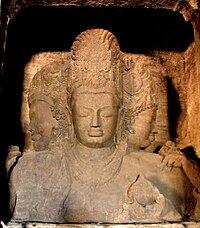



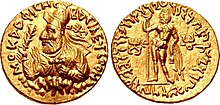




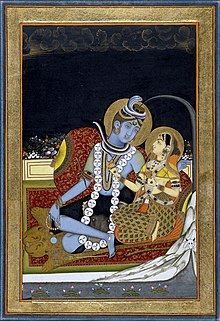


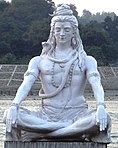
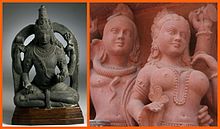
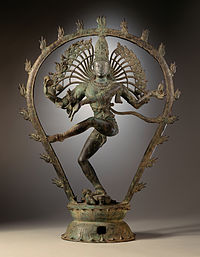



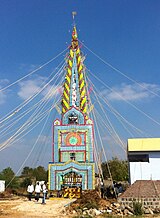
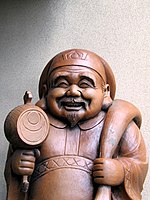
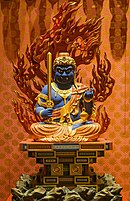

No comments:
Post a Comment